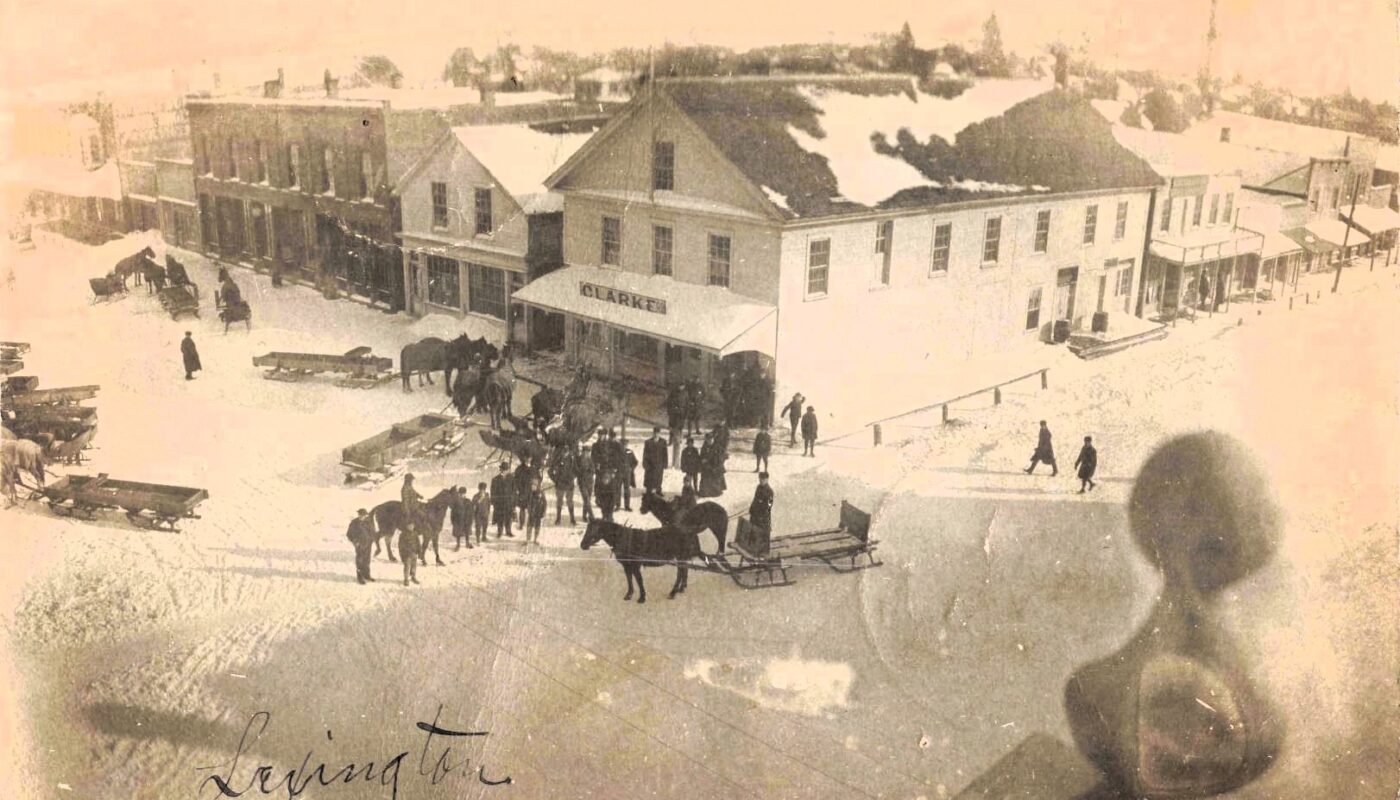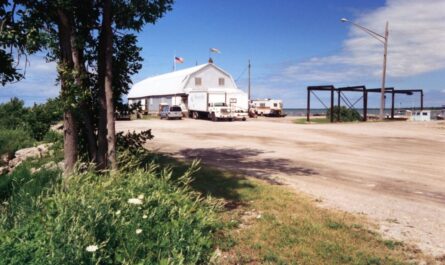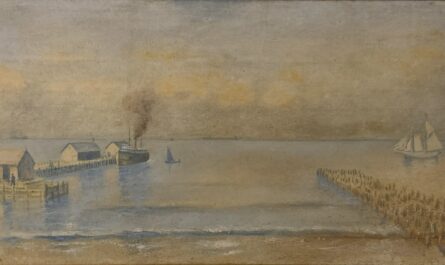The history of Lexington, Michigan, is filled with stories of change along the Lake Huron shoreline. From its early days as a lumber port to its later life as a fishing harbor and summer resort, Lexington has always found new ways to thrive. Today, visitors can still see traces of that past in its harbor, historic buildings, and welcoming main street.
Table of Contents
Video – The History of Lexington Michigan in 3 minutes
Early Settlement and Founding (1830s–1850s)
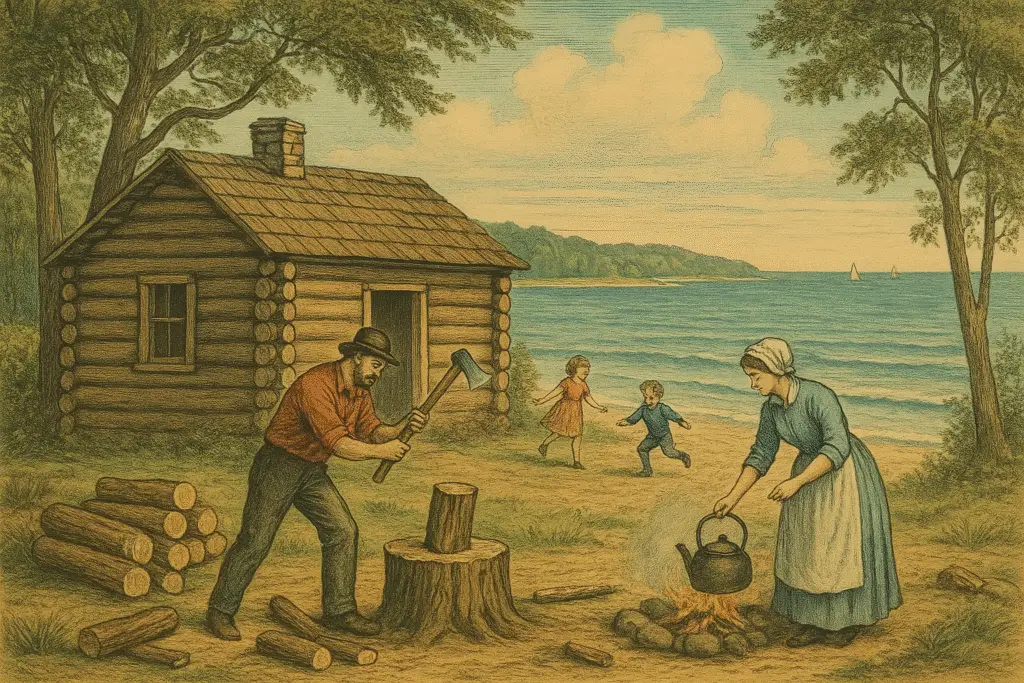
Lexington’s story begins in the 1830s, when it became the first Euro-American settlement on Lake Huron’s shore north of Port Huron. The first settler, John Smith, arrived from Canada in 1837 with his wife and twelve children, marking the humble start of the community. Early on, the area was a remote frontier outpost thick with timber, and settlement was slow and rugged. In 1846, the growing village was officially named Lexington – reportedly chosen by resident Reuben Dimond in honor of the Revolutionary War Battle of Lexington (his wife was a cousin of famed patriot Ethan Allen).
By the 1840s, a few log structures had appeared, including a small log hotel built by C. L. Mills in 1840. Lexington was formally incorporated as a village in 1855, reflecting its modest but steady growth. In 1848, it even became the county seat of the newly organized Sanilac County, underscoring Lexington’s early importance in the region.
During these early years of the history of Lexington Michigan, pioneers carved out homesteads, and the first roads connected the settlement to nearby towns – a plank-and-toll road linking Lexington with Croswell was one notable route for stagecoaches and wagons.. The community remained small but vibrant, poised on the shore of Lake Huron with potential to blossom as a port.
19th-Century Development: Lumber Port and Infrastructure
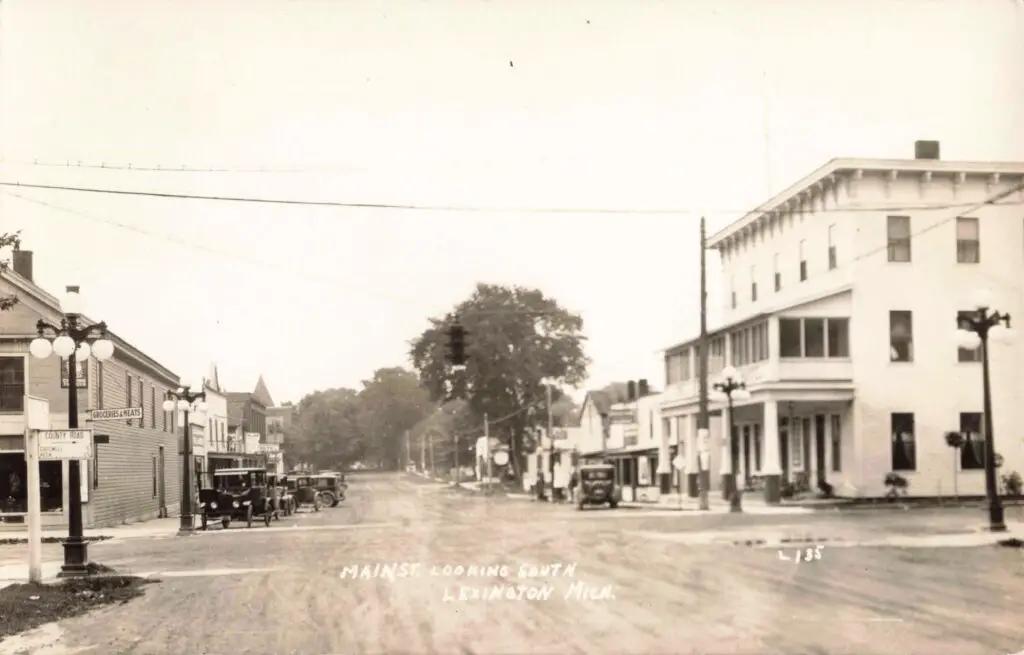
By the mid-19th century, Lexington emerged as a bustling lumber town and lake port. Sawmills sprouted along the waterfront, fueled by the vast timber resources of Michigan’s “Thumb” region. In fact, the first steam-powered sawmill in Sanilac County was built at Lexington in 1846, signalling the start of a thriving lumber industry. Timber and shingle-making became mainstays of the local economy, and the village soon “bore a resemblance to a village” with a growing population of workers.
The harbor was a hub of activity – the first steamboat landed at Lexington in 1846, opening regular lake transportation. Lexington’s harbor and docks allowed schooners and steamers to ship out lumber and bring in supplies. The village’s prominence led to civic improvements: as the county seat, Lexington hosted a courthouse and jail, and entrepreneurs opened shops and services to cater to locals and travelers.
One notable institution was the Cadillac House hotel and tavern, which became a centerpiece of downtown. The Cadillac House story began with that first 1840 log tavern, which changed hands and unfortunately burned down in 1859. In its place, entrepreneur John L. Woods constructed a grand new hotel in 1860, opening it with a festive Fourth of July ball. The Cadillac House, as it was named, welcomed lumber barons, sailors, and stagecoach passengers, and it stands as one of Lexington’s most historic buildings (continuing as an inn to this day).
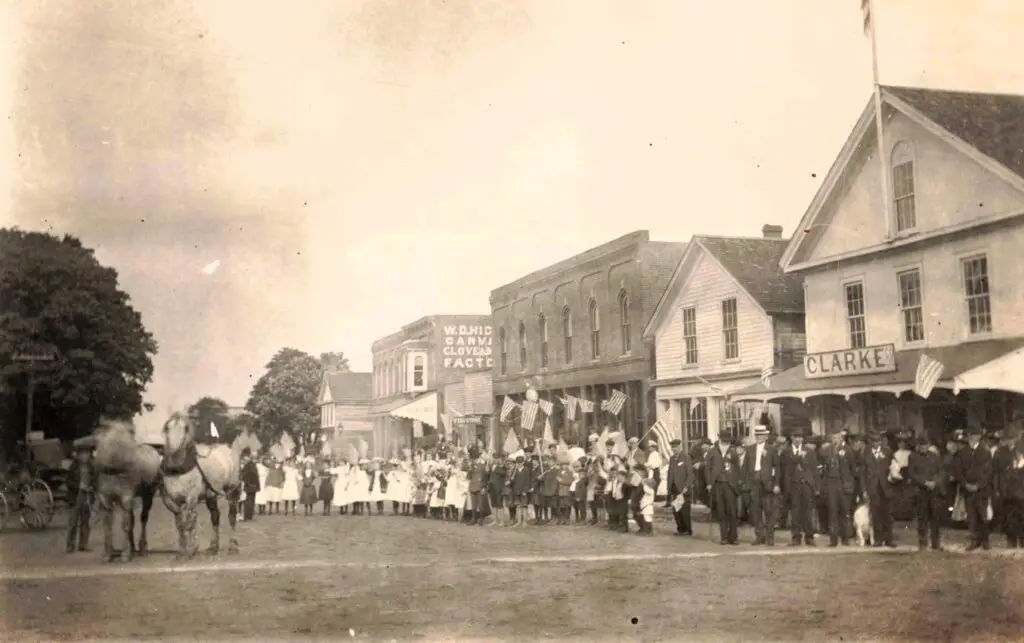
By the 1860s, Lexington’s Main Street featured frame and brick buildings housing general stores, blacksmiths, and other businesses that served the growing community. In 1869, Lexington even established one of the area’s first public libraries upstairs in the B.R. Noble Building (built 1882 with distinctive cast-iron columns).
This period also saw an influx of settlers – notably many from Ontario, Canada. During the 1850s–1870s, foreign-born residents (especially Canadians) outnumbered American-born residents in Sanilac County. Lexington Township had one of the highest concentrations of Canadian immigrants, who brought skills in lumbering and sailing and shaped the town’s character. The community’s faith life started early as well, with churches like the Methodist Church organized by 1838..
All told, by the late 1800s, Lexington had grown from a lonely clearing in the woods into a lively port town with the trappings of civilization: churches, schools, hotels, and a courthouse ringing a small but busy downtown.
Fishing, Shipping, and Maritime Commerce (1870s–Early 1900s)
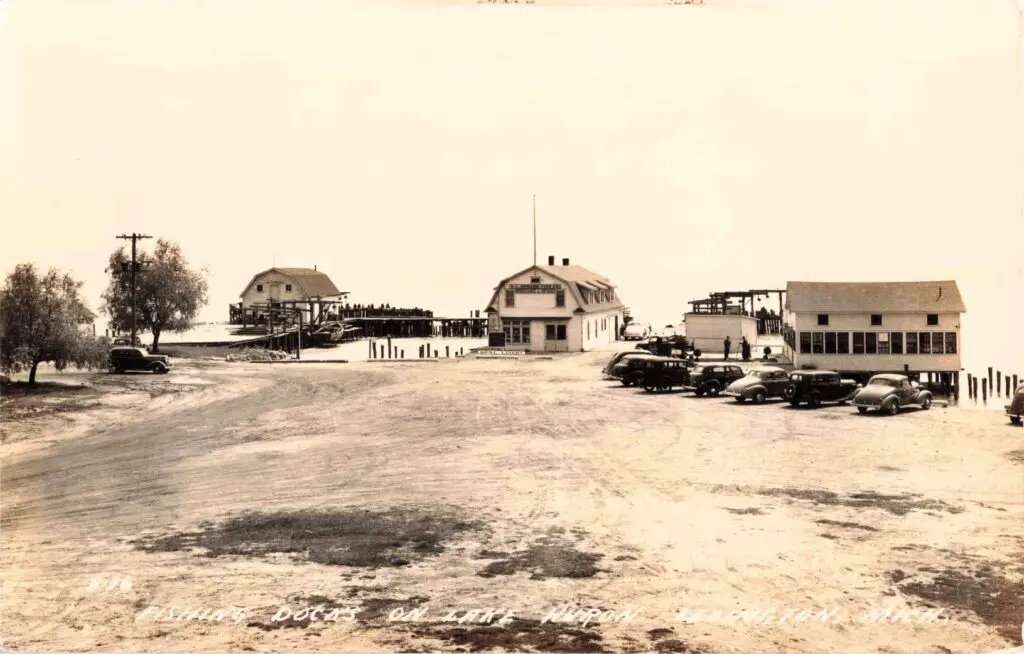
In the late 19th century, as the lumber era waned, Lexington transitioned into a center of commercial fishing and Great Lakes shipping. Its location on Lake Huron made it ideal for maritime commerce. Local fishermen began harvesting the rich fisheries of Lake Huron – whitefish, perch, and trout – and fish packing became an essential business on the docks—companies like the D.C. Howard Fish Company operated along Lexington’s waterfront, sending out boats and hauling in the daily catch to be processed and shipped to market. By the 1880s and 1890s, fishing shanties and smokehouses lined portions of the harbor, and the scent of fresh-caught fish was a standard part of harbor life.
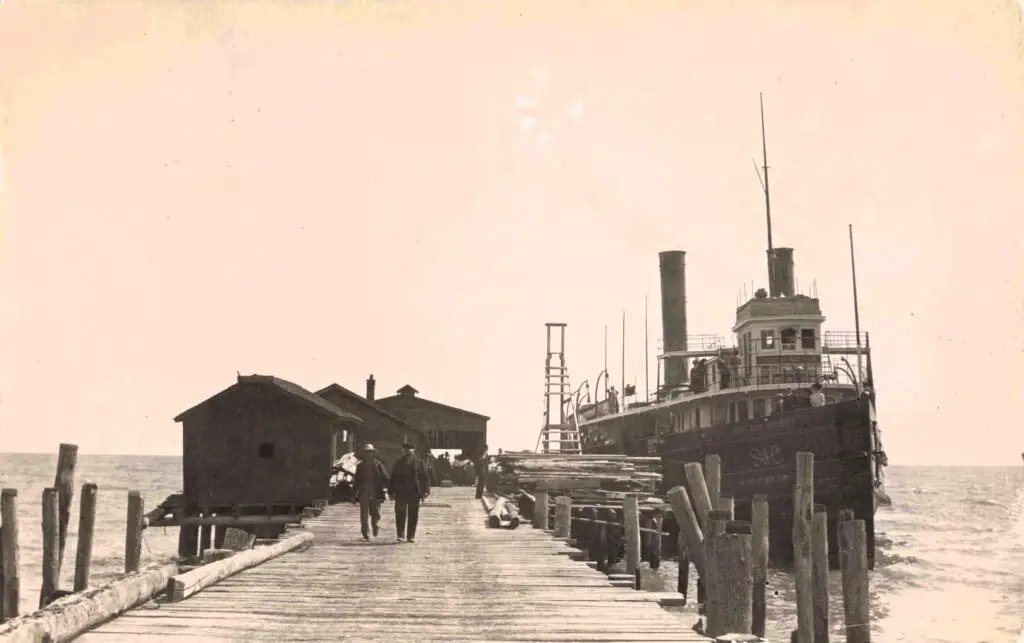
Meanwhile, Great Lakes steamships regularly called at Lexington’s pier. The Detroit and Cleveland Navigation Company (D&C) ran elegant passenger steamers that linked port towns on Lakes Huron and Erie. Lexington, once a central lumber shipping point, became an essential stop for D&C steamers carrying both freight and tourists along the route between Detroit, Port Huron, and Mackinac. Notably, the steamer State of New York could often be seen docking at Lexington’s “Big Pier,” unloading goods and visitors.
These steamships were floating palaces – offering fine dining and music – and they provided vital transportation before automobiles and highways took over. Lexington relied on them for trade and travel, helping local businesses receive supplies and ship out products. In 1879, the railroad reached nearby Croswell (inland), but Lexington never got a railroad spur, so lake transport remained crucial. The village used stage lines and lake steamers to stay connected. However, nature dealt setbacks: the great forest fires of 1871 and 1881 swept through the Thumb region, and while Lexington itself was largely spared from flames, the devastation upended the lumber industry and effectively ended the lumber boom era locally. Many sawmills closed as timber ran out.
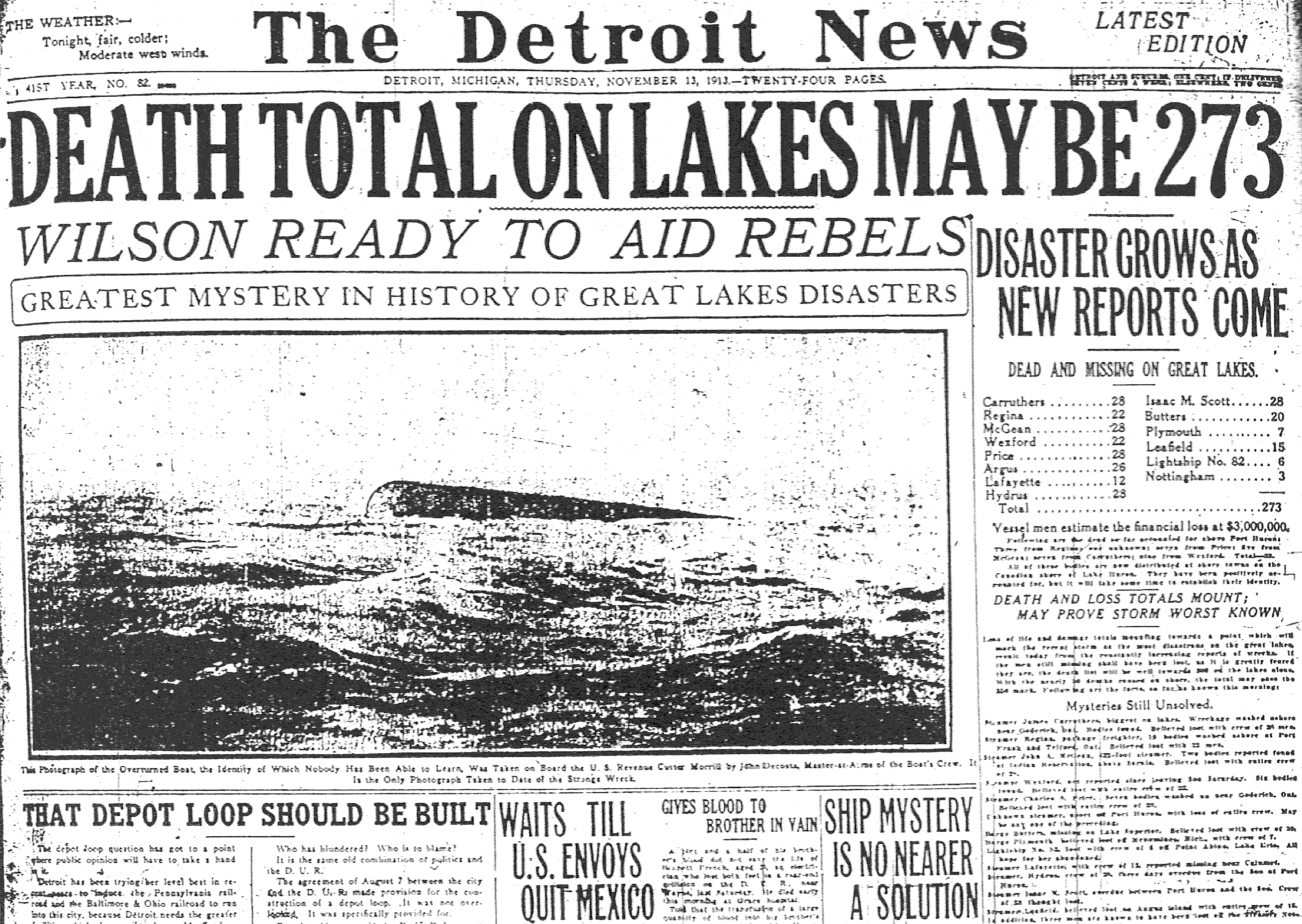
Then, the Great Lakes Storm of 1913 – a notorious November gale – destroyed Lexington’s docks and waterfront infrastructure. The hurricane-force storm wrecked every major pier in Lexington, a blow from which the village’s shipping industry never fully recovered. After 1913, the era of big steamships at Lexington waned. Even so, smaller fishing boats and leisure craft continued to use the harbor. Lexington’s identity was increasingly tied to fishing and tourism rather than freight.
By the early 20th century, commercial fishing was a mainstay livelihood for many families, with daily catches packed in ice and sent to markets by truck or boat. The maritime heritage of this era is a proud part of Lexington’s history, remembered in photographs of masted schooners, steamers, and fish tugs crowding the harbor.
Community Life, Landmarks, and Industry in the Early 1900s

As the 19th century gave way to the 20th, Lexington evolved into a well-rounded small town with a rich community life. Main Street by 1900 was bustling with enterprises that served both residents and summer visitors. There were hardware and grocery stores, barber shops, and even Bell’s Drug Store on Huron Avenue – a local pharmacy and gathering spot (later known as Jay’s Drug Store) that published postcards touting Lexington as “The Resort Town”.
A local bank (the Lexington State Bank) opened to finance farmers and merchants. Professionals like doctors and dentists set up offices above the storefronts. The village installed amenities such as electric streetlights and a village water pump as modern infrastructure arrived. Civic pride was evident in the establishment of a permanent public library.
The Moore Public Library, still a landmark today, has its roots in this era: the building was initially constructed in 1859 as the law office of John Divine, Sanilac County’s first attorney. In 1903, three forward-thinking sisters of the Moore family purchased the building and remodeled it into a library, then deeded it to the Village of Lexington for public use.
One of those sisters, Mary Moore, married Albert E. Sleeper, a prominent local businessman (banker and store owner) who would later serve as Michigan’s Governor (1917–1920). Under Sleeper’s and others’ influence, Lexington in the early 1900s was a well-connected community – Sleeper himself moved to Lexington in 1884 to enter the mercantile and banking trade, indicative of the town’s opportunities at the time.
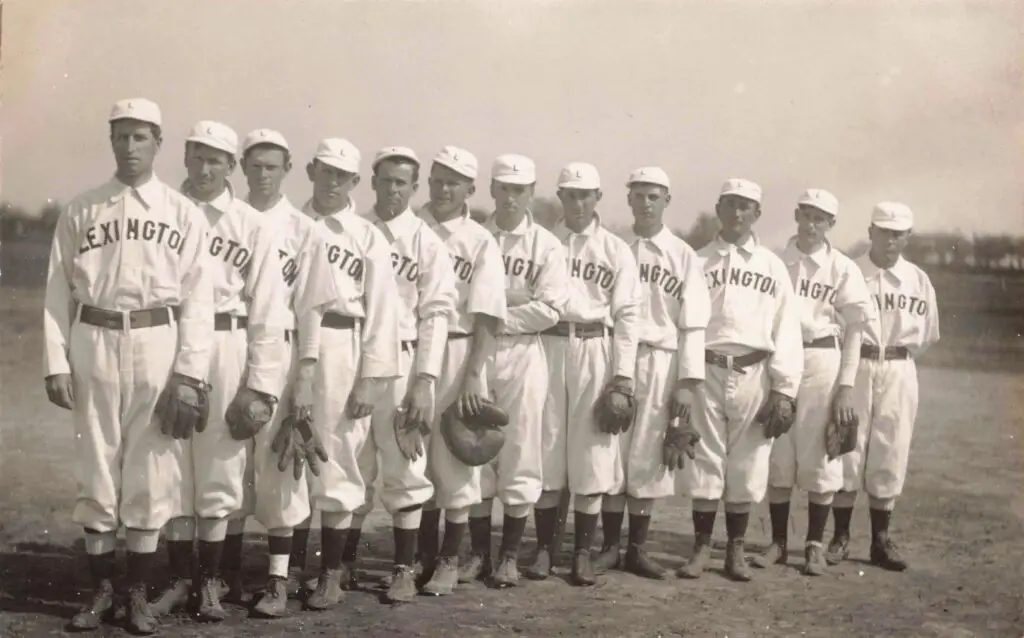
Beyond commerce, Lexingtonians enjoyed a lively social and recreational scene. The village’s own baseball team took to the diamond, reflecting America’s growing passion for baseball in the early 20th century. Town records and photographs show a uniformed Lexington nine posing proudly with bats and gloves, representing the community in regional contests. Local baseball games were popular weekend entertainment, often drawing crowds to cheer on the home team at the ballfield. Churches and fraternal organizations (like the Masons and Odd Fellows) also flourished, hosting picnics, ice cream socials, and holiday parades that brought residents together.
Meanwhile, new industries took root, building on the area’s agricultural strengths. Farmers in surrounding townships grew bountiful crops of beans, cucumbers, sugar beets, and corn. In the early 1900s, Lexington capitalized on this by establishing local food processing plants.
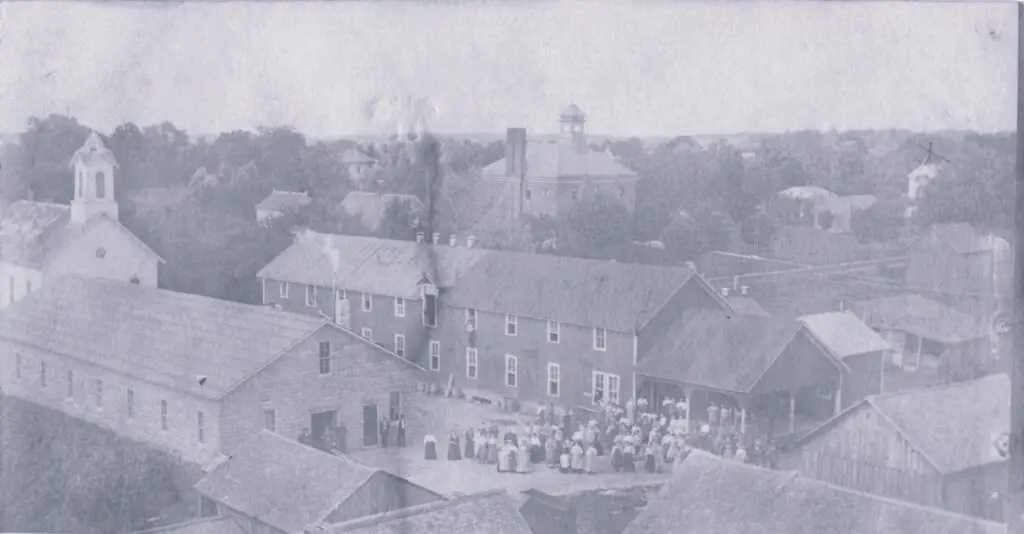
A notable example was the Lexington cannery and pickle factory. By 1908, a pickle and canned goods factory was operating in town (later associated with the Gielow family, who would become famous regional pickle makers). This facility purchased local cucumbers and other produce to pack into pickles, relish, and canned vegetables – creating jobs and a new export product for Lexington. (The Gielow family, starting in the early 1900s, built a pickle business that has continued for generations.)
Nearby, in the township, sugar beets were processed at a refinery in Croswell after 1902, and many Lexington area farmers supplied those factories as well. Other small manufacturing ventures came and went: a planing mill here, a brick yard there – but Lexington remained primarily a fishing village and market town for local agriculture through the first half of the 20th century. One enduring business from this era is Gielow Pickles, which traces its roots to those early pickle-making days and still operates in the Lexington area over a century later.
From Resort Town to Mid-Century Changes (1910s–1950s)
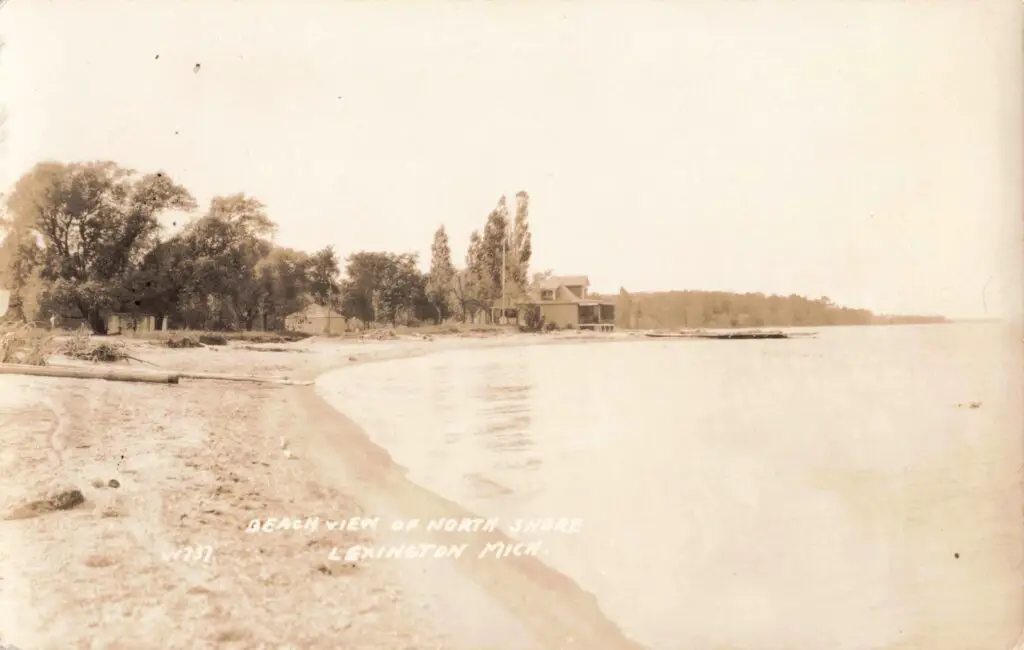
By the 1910s and 1920s, Lexington had gained a reputation as a pleasant resort town on Lake Huron. With its lumber era past and heavy industry limited, the village’s natural charms became a selling point. Promotional postcards dubbed Lexington “The Resort Town,” and well-to-do families from Detroit and southern Michigan came up during the summer to enjoy the lake breezes.

The Cadillac House Hotel remained a centerpiece, accommodating tourists as well as traveling salesmen. Additional boarding houses, cottage rentals, and beachside campgrounds appeared to serve vacationers. The rise of the automobile (and improved highways like M-25 along the shore) made Lexington even more accessible by the 1920s.
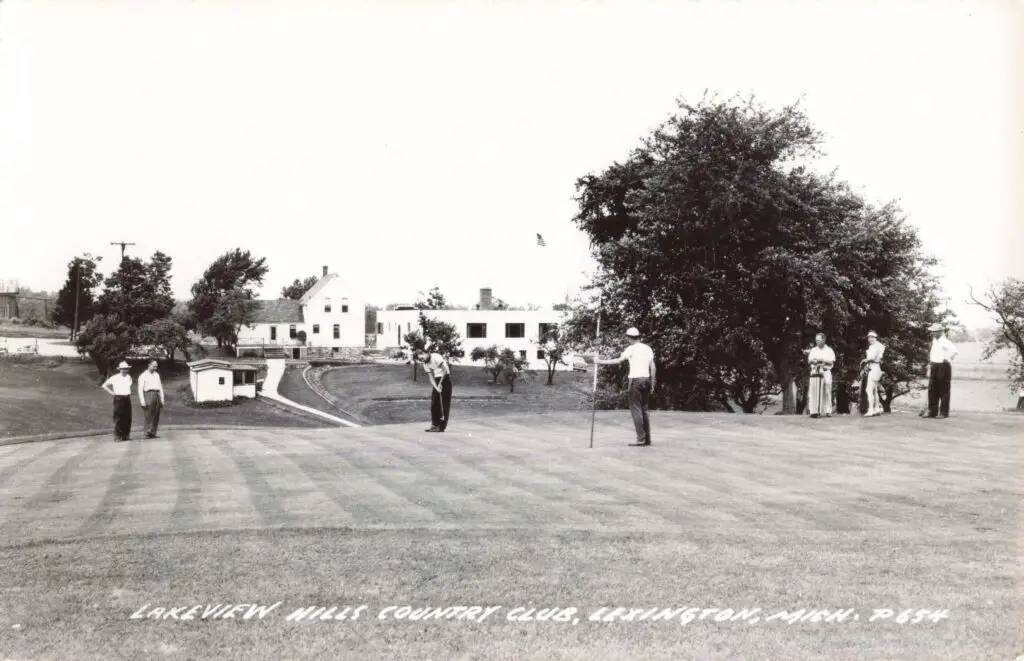
In 1927, the Lakeview Hills Country Club opened just outside town, featuring a scenic golf course overlooking Lake Huron. This addition – complete with a clubhouse, hotel, and later a second course – cemented Lexington’s status as a leisure destination for golfing, boating, and lakeside relaxation.
The establishment of Lakeview Hills (by the Fabbri family) signaled the village’s orientation toward hospitality and recreation. During Prohibition, Lexington’s resorts and dance halls offered a genteel retreat (with perhaps a bit of illicit liquor from Canadian rum-runners coming ashore under cover of darkness). The local population remained small (a few hundred residents), but swelled each summer with cottage-dwellers and hotel guests.
After World War II, the trend of tourism only grew stronger. Returning veterans and their families sought peaceful vacations, and Lexington’s shoreline—dotted now with seasonal cottages and a popular public beach and pier—became part of the “Sanilac County summer mecca” for travelers. Better roads and the burgeoning middle class brought more visitors in the 1940s and 1950s. Lexington’s economy in this period leaned heavily on summer tourism (renting out cottages, running marinas, hosting festivals), as well as the continuing commercial fishing (though by the 1950s, fish stocks were in decline due to overfishing and invasive species).
Agriculture remained important in the surrounding area, but many farms had become mechanized or consolidated, and some local young people found work in factories in larger cities or the auto plants down in Flint and Detroit. Lexington itself saw only minor industrial changes mid-century – the pickle/canning factory carried on, and small businesses like boat builders or appliance shops opened, but there was no major manufacturing influx.
Culturally, the village kept its quaint, nostalgic atmosphere. The Lexington High School teams (by then often combined with Croswell’s in the school district) carried on traditions in sports, and the community gathered for annual events like the Independence Day parade down Main Street, church socials, and fish-fry dinners at the harbor.
Lexington in Transition 1950s
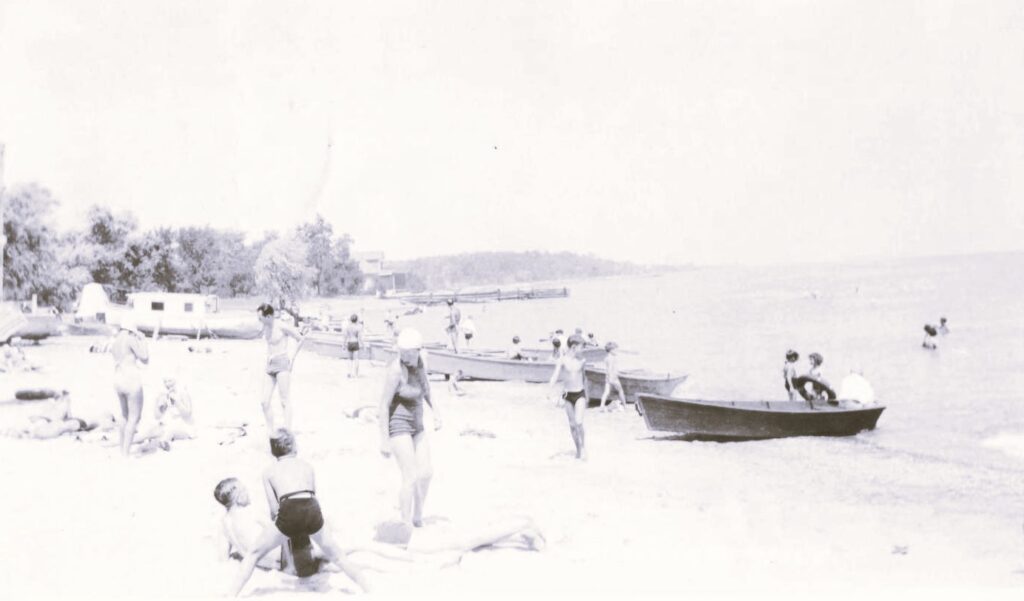
By the late 1950s, Lexington’s historic era of lumberjacks and steamships had long passed, but the village had successfully reinvented itself as a charming lakeside community. Many of the 19th-century buildings still stood: the Moore Library continued lending books; the Cadillac House still welcomed guests; the old town hall and several original storefronts survived, weathered but proud. Locals took pride in figures like former Gov. Albert Sleeper, who had maintained ties to the village even after moving (Sleeper’s stately Victorian home on Huron Avenue remained a point of interest).
In 1955, Lexington quietly marked its 100th anniversary as an incorporated village, reflecting on a century of change – from a pioneer hamlet to a lumber port, then a fishing town, and finally a peaceful resort haven. The decades ahead would bring new challenges and growth, but the period up through the 1950s left an indelible heritage. Lexington’s early development, maritime commerce, and rich local culture continue to be celebrated in museums and archives today, providing a window into the history that shaped this picturesque lakeside town.
FAQs for the History of Lexington Michigan
What is the history of Lexington, Michigan?
Lexington, Michigan was founded in the 1830s and quickly grew into a lumber port. By the mid-1800s it had sawmills, shipping docks, and the Cadillac House hotel. When lumbering declined, fishing and agriculture took over, with pickle and canning factories supporting local farmers. By the 1920s, Lexington had become a resort destination, known for its harbor, golf course, and summer cottages.
What industries shaped Lexington’s growth?
Lexington’s economy shifted several times. The first major industry was lumber, fueled by sawmills and schooner shipping on Lake Huron. After the lumber era ended, commercial fishing and agriculture—especially cucumber farming and pickle processing—sustained the town. Tourism became the dominant industry by the 20th century, supported by resorts, cottages, and golf at Lakeview Hills.
How is the history of Lexington Michigan preserved today?
Lexington’s past remains visible in its historic Main Street buildings, the Cadillac House hotel, and the Moore Public Library. Local museums and archives preserve stories of its lumbering, fishing, and resort eras. Visitors can still walk the harbor, see the old commercial district, and experience the legacy of a town that adapted to changing times along Lake Huron.
Works Cited for the history of Lexington Michigan
Gielow Pickles. “Our Story.” Gielow Pickles, Inc. https://www.gielowpickles.com/.
Portrait and Biographical Album of Sanilac County, Michigan. Chicago: Chapman Brothers, 1884. Internet Archive, https://archive.org/details/portraitbiograph00chap.
“Lexington, Michigan History.” Lexington Village Official Website. Village of Lexington, https://www.villageoflexington.com/.
“Lexington Historic District Walking Tour.” Lexington Business Association. https://www.lexingtonmichigan.org/.
Moore, Mary, et al. Moore Public Library History. Lexington, MI: Village Archives.
“Great Lakes Storm of 1913.” NOAA Great Lakes Environmental Research Laboratory. https://www.glerl.noaa.gov/.
“Detroit and Cleveland Navigation Company.” Great Lakes Maritime Database. University of Michigan Bentley Historical Library, https://quod.lib.umich.edu/.
“Albert E. Sleeper, Governor of Michigan 1917–1920.” Michigan Historical Center, State of Michigan. https://www.michigan.gov/.

